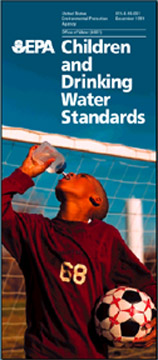If you were born before 1975, you may remember:
At the time, no one thought that any of these behaviors were dangerous, but know anyone doing these would be considered crazy! So how do we know if we are protecting the health of our own children today against modern hazardous? These free pages are intended to help answer your questions.
An Introduction to Indoor Air Quality - This document identifies indoor air quality problems, and offers solutions for improving the air quality in your home and school with pollutant-specific information.
Indoor Air Quality in Schools - Because children are especially susceptible to air pollution, air quality in schools is of particular concern. Proper maintenance of indoor air is more than a "quality" issue; it includes safety and good management of our investment in the students, staff, and facilities. Find publications, "Tools for Schools" action kits and answers to frequently asked questions.
Asbestos - This document discusses what asbestos is and the health affects of exposure.
Asthma - EPA's role in asthma education and prevention.
Asthma & the Environment: A Strategy to Protect Children (1MB) - Read about the joint EPA and Department of Health and Human Services initiative to fight childhood asthma through a comprehensive national strategy. Available in Adobe Acrobat PDF format.
Secondhand Smoke - This site discusses the health risks to children and adults from secondhand smoke with particular regard to immediate and longer term health effects.
Lead - This site discusses the ways in which people are exposed to lead and precautions they can take to reduce the risk of exposure.
Actions You Can Take to Reduce Lead in Your Drinking Water - This publication offers information and solutions to many common questions about how you can reduce lead in your drinking water.
 For more information about the drinking water quality in your community and your state, click here. Some communities have made their annual water quality reports available online on this site. For more information about the drinking water quality in your community and your state, click here. Some communities have made their annual water quality reports available online on this site. | There's been a lot of talk lately about drinking water. You may have seen features in the newspaper, on television news and in popular magazines, even in movies and television specials. This media coverage, combined with the new annual reports on drinking water that water systems are sending directly to their customers, is making many people think more about their drinking water. A question many people have on their minds is: Should I be concerned about the tap water my children are drinking? This booklet explains how national standards contribute to drinking water safety, and helps readers make informed, reasonable choices about the water they and their children drink. To read the booklet in HTML format, click here. To read the booklet in PDF format, click here. For help using the free Adobe PDF Reader, click here.
|
Ten Tips to Protect Children from Pesticide and Lead Poisonings around the Home - These simple steps can help you save children from environmental hazards around the home.
* Spanish Version
Protect Your Family and Yourself from Carbon Monoxide Poisoning- Knowing the symptoms of Carbon Monoxide poisoning and immediate first aid techniques provided in this document can save your life and the life of your family.
Using Insect Repellents Safely - Suggests ways of choosing insect repellents and applying them.
| Pesticides and Child Safety - With an estimated 74,000 children involved in common household pesticide-related poisonings or exposures in the United States in 1994, this document provides recommendations for preventing accidental poisoning, provides emergency numbers, and discusses basic first aid. Protecting Children from Pesticides - This fact sheet describes the vulnerability of children to pesticides and some of the actions EPA has taken to protect children. Ten Tips to Protect Children from Pesticide and Lead Poisonings around the Home (Also available in Spanish) - This publication provides resources and safety tips to prevent pesticide and lead poisoning. |
Sun Protection for Kids - This document discusses precautions that can help you assist children to avoid ultraviolet (UV)-related health problems.
Ultraviolet Index : An Overview - Do you know that a few simple precautions can help protect you and your children from skin cancer and serious eye injury?
Sunwise Schools Program - This program provides materials to help teachers educate students in K-6 about protecting themselves from overexposure to the sun's ultraviolet radiation.